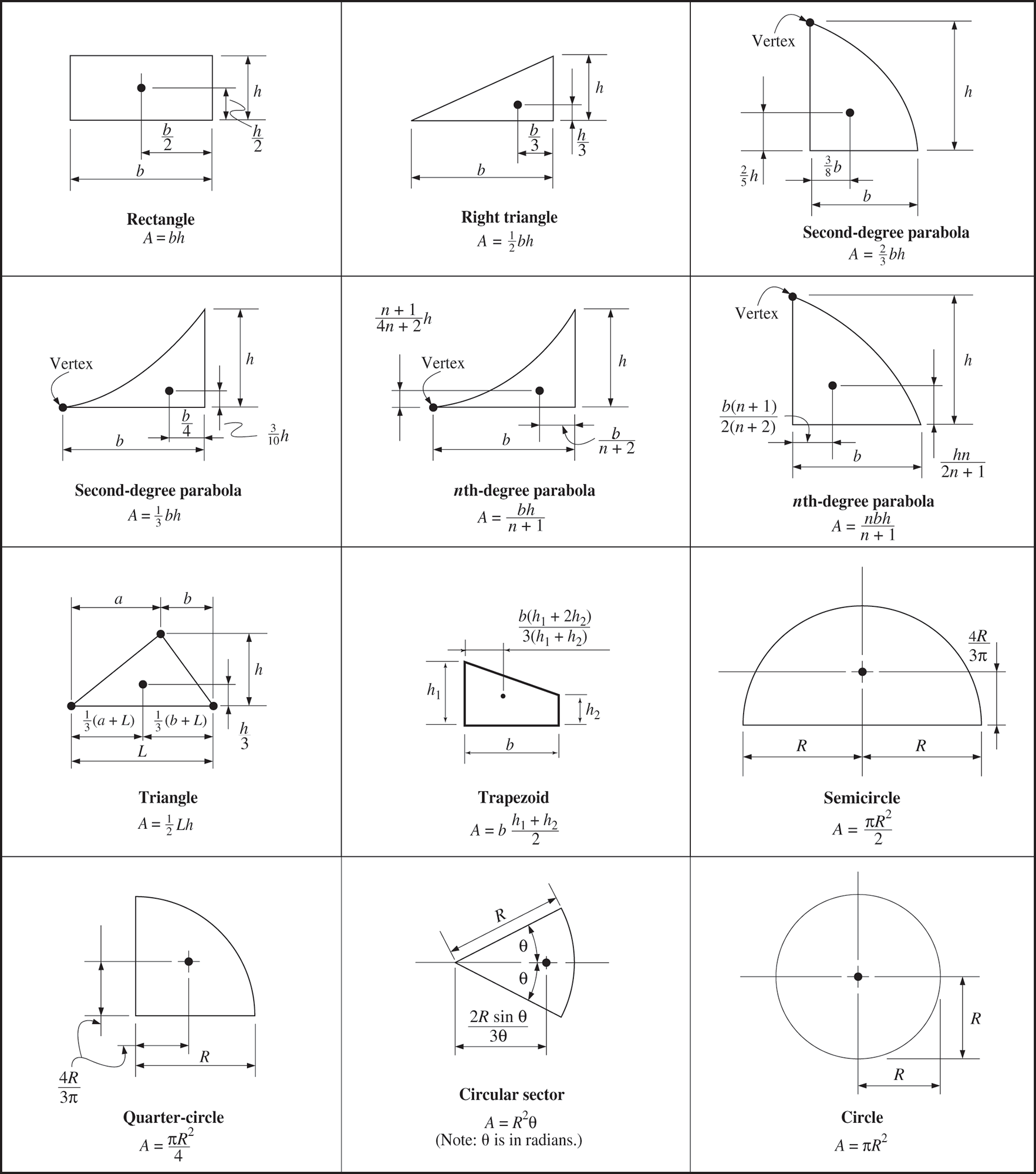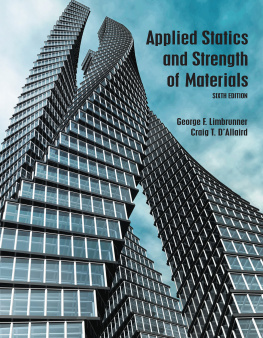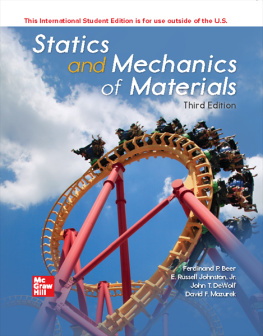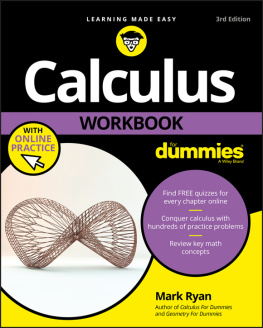
Table Conversion factors: U.S. Customary to SI units
| Multiply | | By | To Obtain |
|---|
| Length | inches | 25.40 | = millimeters |
| feet | 0.3048 | = meters |
| yards | 0.9144 | = meters |
| miles (statute) | 1.609 | = kilometers |
| Area | square inches | 645.2 | = square millimeters |
| square feet | 0.0929 | = square meters |
| square yards | 0.8361 | = square meters |
| Volume | cubic inches | 16,387. | = cubic millimeters |
| cubic feet | 0.028 32 | = cubic meters |
| cubic yards | 0.7646 | = cubic meters |
| gallons (U.S. liquid) | 0.003 785 | = cubic meters |
| Force | pounds | 4.448 | = newtons |
| kips | 4448. | = newtons |
| Force per unit length | pounds per foot | 14.594 | = newtons per meter |
| kips per foot | 14,594. | = newtons per meter |
| Load per unit volume | pounds per cubic foot | 0.157 14 | = kilonewtons per cubic meter |
| Bending moment or torque | inch-pounds | 0.1130 | = newton meters |
| foot-pounds | 1.356 | = newton meters |
| inch-kips | 113.0 | = newton meters |
| foot-kips | 1356. | = newton meters |
| inch-kips | 0.1130 | = kilonewton meters |
| foot-kips | 1.356 | = kilonewton meters |
| Stress, pressure, loading (force per unit area) | pounds per square inch | 6895. | = pascals |
| pounds per square inch | 6.895 | = kilopascals |
| pounds per square inch | 0.006 895 | = megapascals |
| kips per square inch | 6.895 | = megapascals |
| pounds per square foot | 47.88 | = pascals |
| pounds per square foot | 0.047 88 | = kilopascals |
| kips per square foot | 47.88 | = kilopascals |
| kips per square foot | 0.047 88 | = megapascals |
| Mass | pounds | 0.4536 | = kilograms |
| Mass per unit volume (density) | pounds per cubic foot | 16.02 | = kilograms per cubic meter |
| pounds per cubic yard | 0.5933 | = kilograms per cubic meter |
| Moment of inertia | inches4 | 416,231. | = millimeters4 |
| Mass per unit length | pounds per foot | 1.488 | = kilograms per meter |
| Mass per unit area | pounds per square foot | 4.882 | = kilograms per square meter |
Table Areas and centroids of areas

Applied Statics and Strength of Materials
Applied Statics and Strength of Materials
Sixth Edition
George F. Limbrunner, P.E.
Hudson Valley Community College (Emeritus)
Craig T. DAllaird, P.E.
Hudson Valley Community College

BostonColumbusHobokenIndianapolisNew YorkSan FranciscoAmsterdamCape TownDubaiLondonMadridMilanMunichParisMontralTorontoDelhiMexico CitySo PauloSydneyHong KongSeoulSingaporeTaipeiTokyo
Editorial Director: Andrew Gilfillin
Editorial Assistant: Nancy Kesterson
Director of Marketing: David Gesell
Marketing Manager: Darcy Betts
Program Manager: Holly Shufeldt
Project Manager: Janet Portisch
Procurement Specialist: Deidra M. Skahill
Senior Art Director: Diane Ernsberger
Cover Designer: Cenveo Publisher Services
Cover Image: Shutterstock
Full-Service Project Management and Composition: Integra Software Services, Ltd.
Printer/Binder: Courier Kendallville
Cover Printer: Courier Kendallville
Text Font: 10/12 Minion Pro Regular
Credits and acknowledgments borrowed from other sources and reproduced, with permission, in this textbook appear on the appropriate page within text.
Copyright 2016, 2009, 2004, 1999, 1995 by Pearson Education, Inc. or its affiliates. All Rights Reserved. Printed in the United States of America. This publication is protected by copyright, and permission should be obtained from the publisher prior to any prohibited reproduction, storage in a retrieval system, or transmission in any form or by any means, electronic, mechanical, photocopying, recording, or otherwise. For information regarding permissions, request forms, and the appropriate contacts within the Pearson Education Global Rights & Permissions department, please visit www.pearsoned.com/permissions/.
Many of the designations by manufacturers and sellers to distinguish their products are claimed as trademarks. Where those designations appear in this book, and the publisher was aware of a trademark claim, the designations have been printed in initial caps or all caps.
Library of Congress Cataloging-in-Publication Data
Limbrunner, George F.
Applied statics and strength of materials/George F. Limbrunner, P.E., Hudson Valley Community College (Emeritus), Craig T. DAllaird, P.E., Hudson Valley Community College.Sixth edition.
pagescm
ISBN 978-0-13-384054-4 (alk. paper)ISBN 0-13-384054-9 (alk. paper)1.Statics.2.Strength of materials.I.DAllaird, Craig T.II.Title.
TA351.S64 2015
620.1'123dc23
2014030424
10987654321

ISBN 10: 0-13-384054-9
ISBN-13: 978-0-13-384054-4
Brief Contents
Contents
Preface
The sixth edition of Applied Statics and Strength of Materials presents an elementary, analytical, and practical approach to the principles and physical concepts of statics and strength of materials. It is written at an appropriate mathematics level for engineering technology students, using algebra, trigonometry, and analytic geometry. An in-depth knowledge of calculus is not required for understanding the text or solving the problems.
This book is intended primarily for use in two-year or four-year technology programs in engineering, construction, or architecture. Much of the material has been classroom-tested in our Accreditation Board for Engineering and Technology (ABET) accredited engineering technology programs. The text can also serve as a concise reference guide for undergraduates in a first engineering mechanics (statics) and/or strength of materials course in an engineering program. Although written primarily for technology students, this book can be a valuable reference also for those preparing for state licensing exams in engineering, architecture, or construction.
The book emphasizes mastery of basic principles, since it is this mastery that leads to successful solutions of real-world problems. This emphasis is achieved through numerous, step-by-step example problems, a logical and methodical presentation of material, and selection of topics geared toward student needs. This step-by-step approach to solving problems provides consistent and comprehensive solutions to problems that can be used as references. The principles and applications presented are applicable to many fields of engineering technology including civil, mechanical, construction, architectural, industrial, and manufacturing.
Next page











